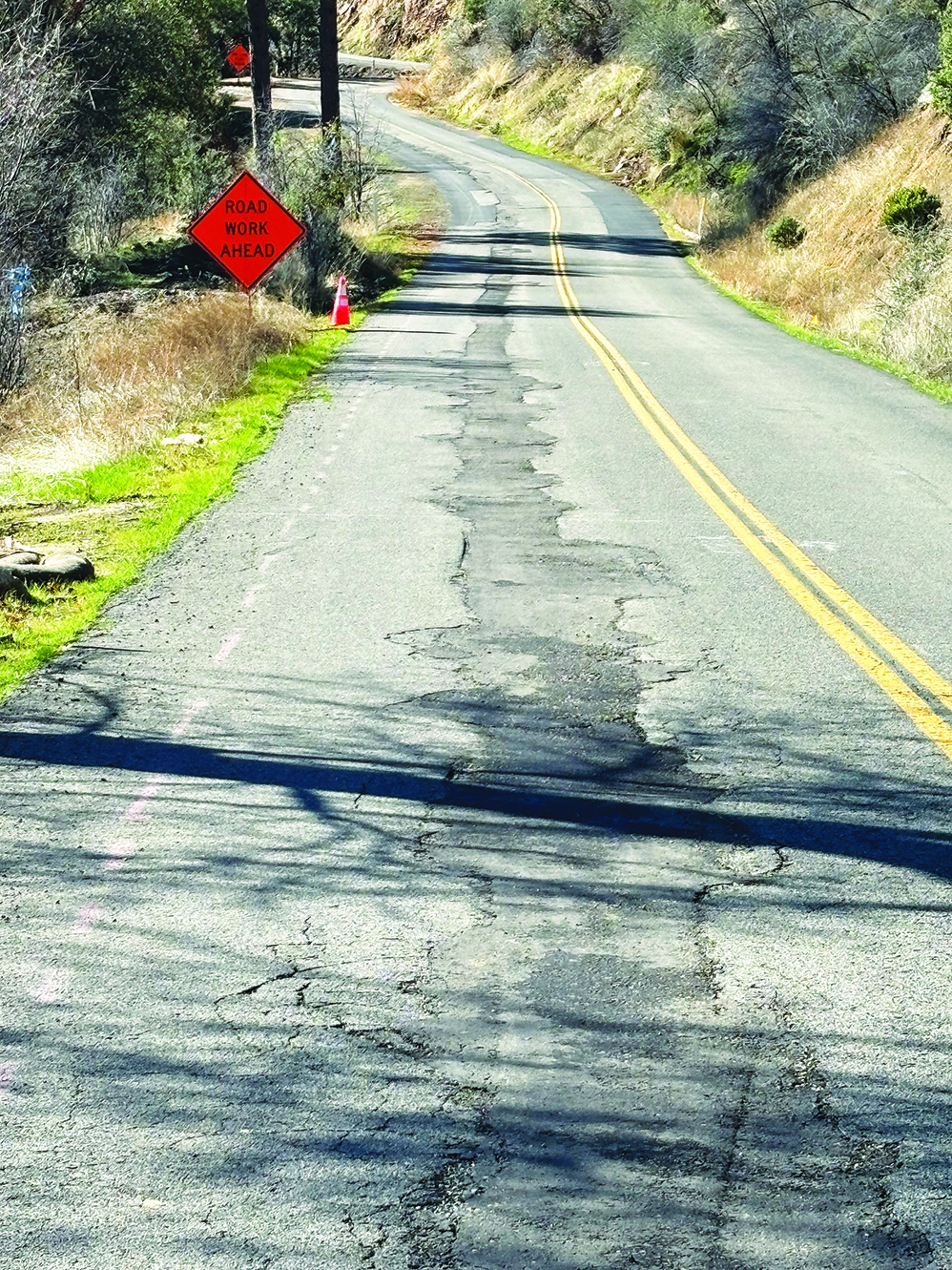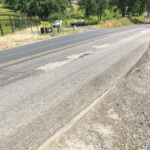
Will PG&E restore the county’s roadways after underground construction
(Editor’s Note: After over two frustrating weeks of reaching out to officials within PG&E with questions about the badly needed repairs or resurfacing of Triangle and Darrah Roads – to no avail, we’ve decided to ask those questions in a public forum here. Maybe this way we’ll get some answers.)
By R.D. Tucker
Clang. Bang. Clunk. Thud.
Those sounds are reminiscent of the opening scene from an old Batman & Robin cartoon episode. Or maybe that’s the noise shock absorbers and vehicles will be making after residents travel Triangle and Darrah Roads following the first round of Pacific Gas and Electric’s (PG&E) underground power construction.
Long before the recent updates to Highway 49, Darrah Road was the autobahn of Mariposa County. In 2021, just a year before the devastating Oak Fire, 2.3 miles of Triangle Road got a new facelift at a cost of just over a million dollars. Darrah Road typically hosts 2,000 vehicles per day, and Triangle Road is also well-traveled.
Both of these roads have sustained extensive damage as PG&E excavated and trenched right down the middle of either lane to put their power lines underground instead of suspended overhead from power poles. The construction hasn’t affected the full length of either road, but at this point, no one at PG&E has announced how many more months, or years, this construction will continue.
That question echoes loudly within the Mariposa County Public Works Department, which is poised to launch $2.4 million in roadway repairs when the weather improves later this year.
Everyone wants to know why the trenches for the power lines were gouged out down the middle of one lane of travel, rather than in the established public easement on both sides of the roadway.
Reportedly, Mariposa County and PG&E have agreed that the roads will be restored to their original condition or better, but the question remains, what entity makes the judgment as to the condition of the roadway prior to construction? What happens if PG&E states that the roadways were deteriorating before construction, so the trenches just need to be patched and then the asphalt filled back to the original roadway grade?
Anyone who has driven on those county roads in the last few weeks has experienced how much the filled trenches have begun to sink, with undoubtedly more problems on the horizon courtesy of wet winter weather.
A seasoned construction manager with one of the state’s larger paving contractors spoke with The Mariposan about the reconstruction phase. He agreed to provide information under the condition of anonymity for fear of retribution from the power company or the loss of future contracts.
The construction manager said that in all likelihood, PG&E will contract for what is commonly known as a “full 2-inch grind and overlay.” What that entails is milling the one lane down to grade bed, then overlaying with new, hot asphalt.
That will improve the lanes containing the scarring of the trenches, but not the areas of the roadway where the trenches crossed over the adjacent lane to provide power on the opposite side of the pavement. Does that sound like it’s bringing the entire roadway back to its original condition? So far, that’s a question unanswered by PG&E officials.
He also explained that the longer the stretch of roadway to be repaired, the more economical it is to complete. “You want the paving to be as continuous as possible with the least amount of starts and stops. That creates less bumps, so there’s not just the economic aspect, but quality and appearance,” the paving expert stated. “When they get enough in the ground (power lines), the most cost-effective way to do the work is to do as much as possible at one time. Doing just one lane could be questionable, depending on the equipment they used and if they caused damage to the other lane. I have seen them have to do both lanes if they banged it up so bad.”
So, the question remains; how many more hook-ups or how much longer will PG&E be doing roadway construction in the county before repairs or resurfacing take place?
Other unanswered questions remain regarding safety and access for repair.
Along many roadways in the county there are warning signs indicating that digging is prohibited since there are underlying utility lines, typically telephone lines, maybe even high-speed fiber optic communication lines. Has anyone seen warning signs placed where trenches have been excavated across private property to reach residences? How deep are the trenches?
Should those areas be identified? Almost all contractors know that calling 811 will yield important information about the area they plan to excavate. But what about the unsuspecting homeowner or fencing contractor about to punch a steel pipe or t-post into one of those trenches? What happens when a snowplow rams one of the roadside transmission boxes that aren’t flush with the ground level?
And what if the underground lines are somehow damaged? Rural residents are very familiar with the effects of expanding root growth or burrowing critters. What about failures in the line itself?
How do they locate the problem since it’s not visible above ground? What further construction, possibly in the same roadways, will residents endure during the repair process, and will that process require an extended period of time while the problem underground is located?
All of this work is allegedly being done to reduce the risk of wildfires. Or is it being done to reduce PG&E’s liability and exposure to litigation after failing to maintain their overhead lines?
According to Macrotrends.com, a website that tracks the finances of publicly held companies like PG&E, reports that the behemoth Northern California utility posted a $4.8 bullion gross profit in the third quarter last year, ending Sept. 20, 2023. That was an 18.98 percent increase, year-over-year, for that quarter. In the previous 12 months, PG&E divulged a gross profit of $18.004 billion, a 6.38 percent increase, year-over-year.
This same utility company received a 13 percent rate increase from the California Public Utility Commission (PUC) just last November. Another increase is anticipated this spring. The five commissioners on the PUC are appointed by Governor Gavin Newsom.
Perhaps the answers will be forthcoming from PG&E? Or maybe we’ll continue to be left in the dark.


















